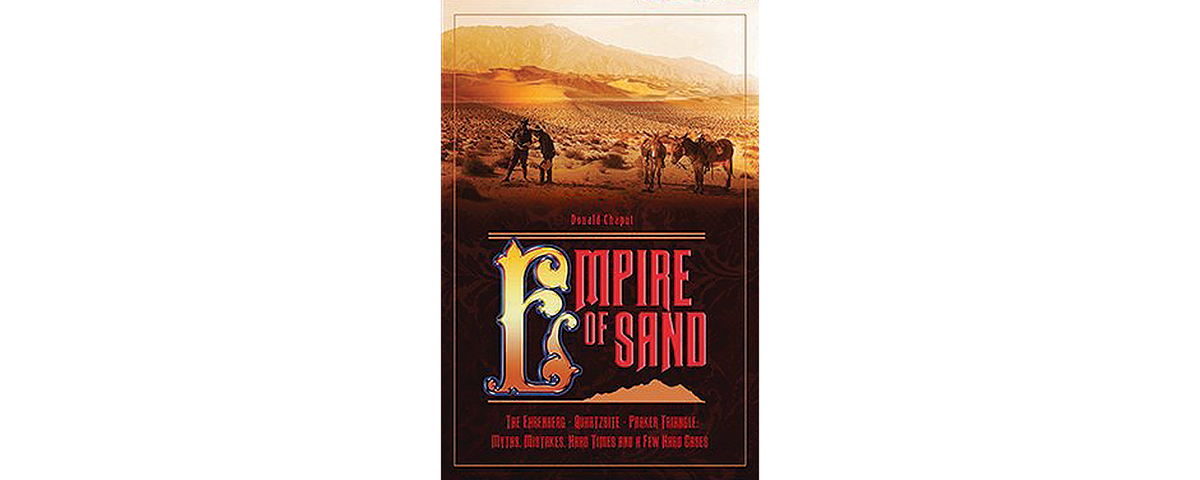Empire of Sand: The Ehrenberg-Quartzsite-Parker Triangle: Myths, Mistakes, Hard Times and a Few Hard Cases, by Donald Chaput, Graphic Publishers, Santa Ana, Calif., 2015, $19.95
Well, it was hardly the California Gold Rush or the other famous rushes to what became Colorado, Montana and South Dakota. But mining—for gold, silver, cooper and even manganese—was the primary reason for venturing to what is present-day La Paz County, Ariz. (carved out of Yuma County in 1983), beginning in the 1860s.
Before then few had reason to go there. “The lack of water, the inhospitable heat, the scarcity of inhabitants, forests and other attracting influences combined to make this sort of a land uninteresting, uninviting and unknown,” writes Don Chaput, curator emeritus of the Natural History Museum of Los Angeles County. Even those well versed in the mining West might have trouble pinpointing many of the mineral properties and operations Chaput brings back to life (at least on paper).
The author has done his share of writing about the Earp brothers (including the 1996 biography Virgil Earp: Western Peace Officer), and indeed Wyatt Earp was the most famous Westerner to file and work claims in this region east of the Colorado River. By 1908 Wyatt—most closely associated with Tombstone, Arizona Territory and a certain gunfight there in 1881—had strong connections to Parker, Arizona Territory, which Chaput calls, along with Quartzite, “the linchpins in the economic, political and social life of La Paz County.”
The region also had what the author says were “important links with Los Angeles financing and mining ventures in the era between 1900 and 1930.” As a result, much money was poured into well-promoted mining projects, but often the returns failed to meet expenses. Sometimes the operations simply weren’t sound, based as they were on what Chaput calls “ridiculous geological theory” or “trashy projects” and sometimes involving “an outright fraud.”
This part of the West might have once been forgotten, and then was only recognized for its mineralogical abundance. But the author says it has become—thanks to its dozen mountain ranges, desert vegetation, rich history and strong connection with the Colorado River—“a traveler and tourist Mecca.”
—Editor





